The world is full of breathtaking natural wonders, but few things capture the soul quite like the beauty of a lake. Calm, mysterious, and endlessly inspiring, lakes mirror the sky and mountains, telling silent stories of history and nature. Whether tucked away in misty forests, perched high in the mountains, or lying in the heart of deserts, lakes offer a magical retreat for travelers.
This blog will take you on a journey across continents to explore 25 of the most beautiful lakes in the world. From Italy’s luxurious Lake Como to the ethereal pink waters of Australia’s Lake Hillier, each lake has its own unique charm and story. Get ready to discover places where nature feels almost too perfect to be real.
01. Lake Como, Italy:
Area: 146 km²
Famous for: Luxurious villas, dramatic alpine scenery, celebrity vacations.
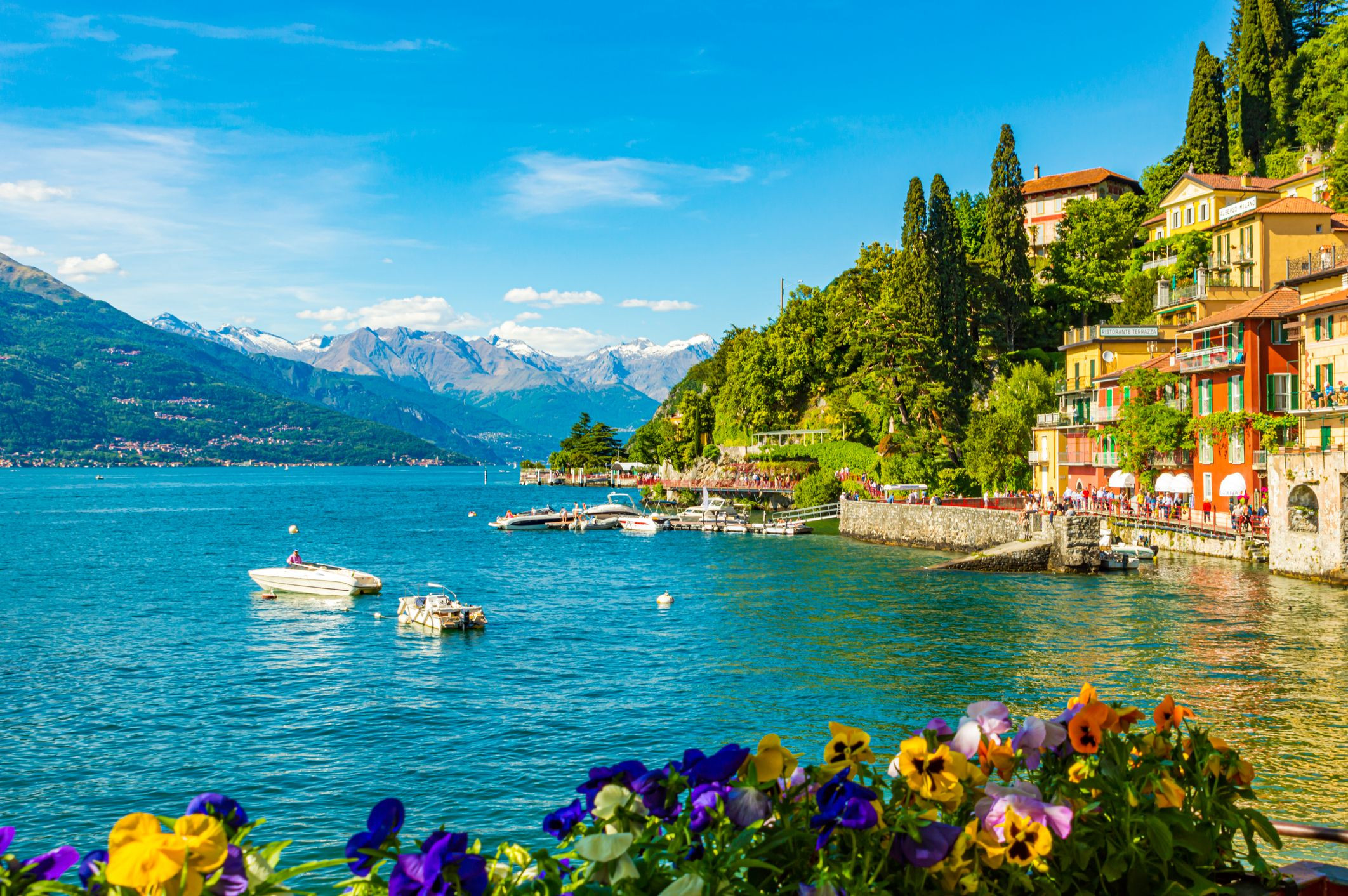
Lake Como, located in northern Italy, is one of the most glamorous lakes in the world. Shaped like an inverted "Y", the lake is surrounded by picturesque villages like Bellagio, Varenna, and Menaggio. Its deep blue waters are framed by steep hills and lush gardens, offering a timeless setting that has enchanted visitors for centuries. The lake is a playground for celebrities and travelers alike, boasting grand historic villas and luxury resorts. Boating on Lake Como is a magical experience, and the charming waterfront cafés and cobblestone streets add to the romance. With the Alps providing a stunning backdrop, Lake Como is a perfect blend of natural beauty, culture, and luxury.
02. Crater Lake, USA:
Area: 53.35 km²
Famous for: Deep blue color, clearest freshwater lake, volcanic origin.
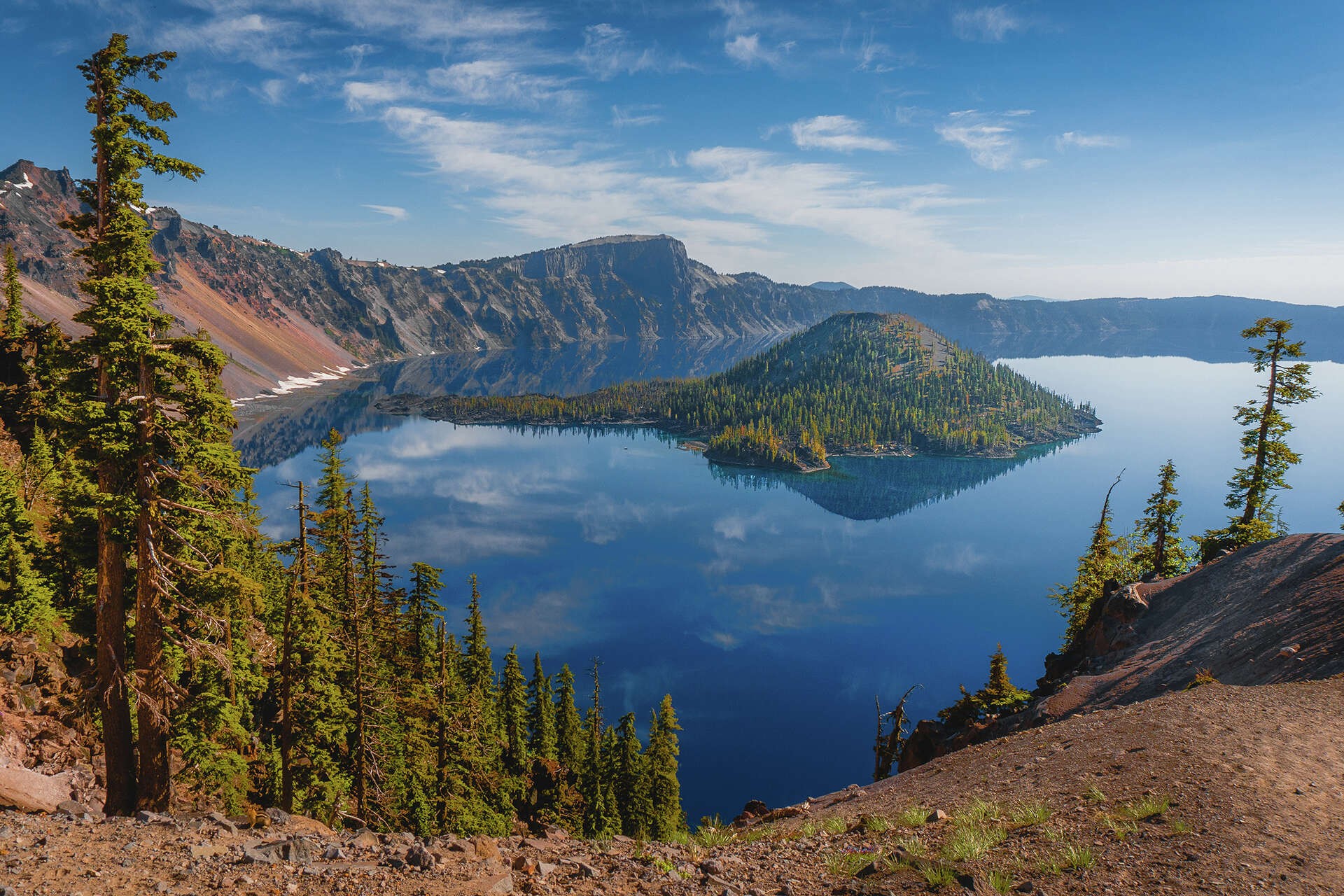
Crater Lake, located in Oregon, is the deepest lake in the United States and one of the most visually striking lakes in the world. Formed about 7,700 years ago after the collapse of Mount Mazama, the lake is known for its intense blue color and exceptional clarity. There are no rivers flowing into or out of the lake, making it one of the cleanest bodies of water on Earth. Crater Lake’s iconic Wizard Island, a cinder cone rising from the water, adds to its mystical appearance. During winter, heavy snowfall transforms the area into a white wonderland. Hiking, boat tours, and scenic drives around Rim Drive offer incredible views of this natural masterpiece.
03. Lake Tahoe, USA:
Area: 496.2 km²
Famous for: Crystal-clear waters, year-round outdoor activities, alpine scenery.
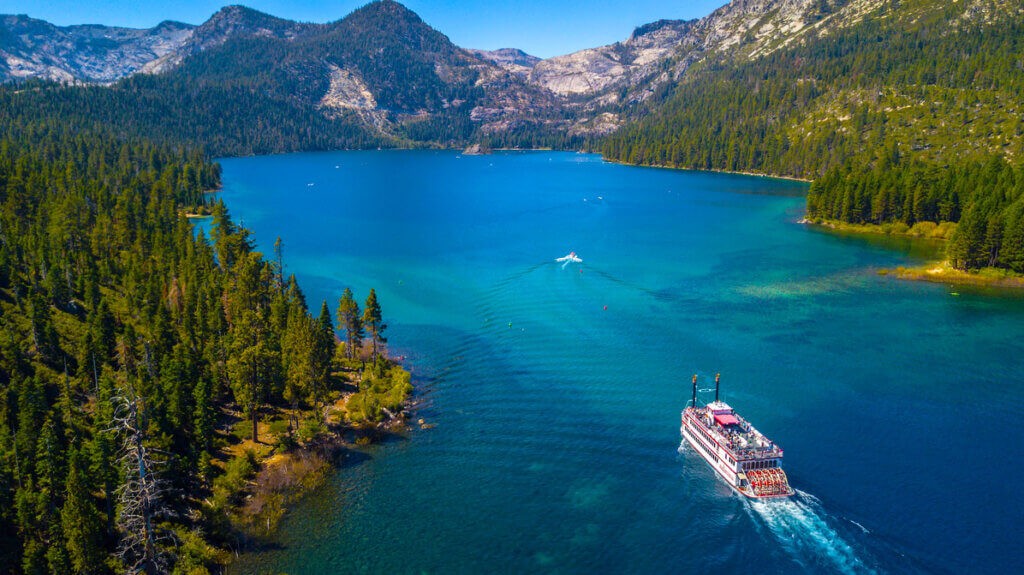
Nestled in the Sierra Nevada Mountains, Lake Tahoe is North America's largest alpine lake. Straddling the border between California and Nevada, it is celebrated for its stunningly clear, sapphire-blue water. In summer, visitors flock here for hiking, boating, and beaches, while winter transforms Tahoe into a snowy paradise perfect for skiing and snowboarding. The surrounding mountains frame the lake beautifully, creating one of the most iconic landscapes in the United States. Lake Tahoe’s depth and clarity give it a mesmerizing color that shifts with the sun. Popular towns like South Lake Tahoe and Tahoe City offer cozy accommodations and vibrant nightlife for travelers year-round.
04. Lake Baikal, Russia:
Area: 31,722 km²
Famous for: Deepest and oldest freshwater lake, unique biodiversity.
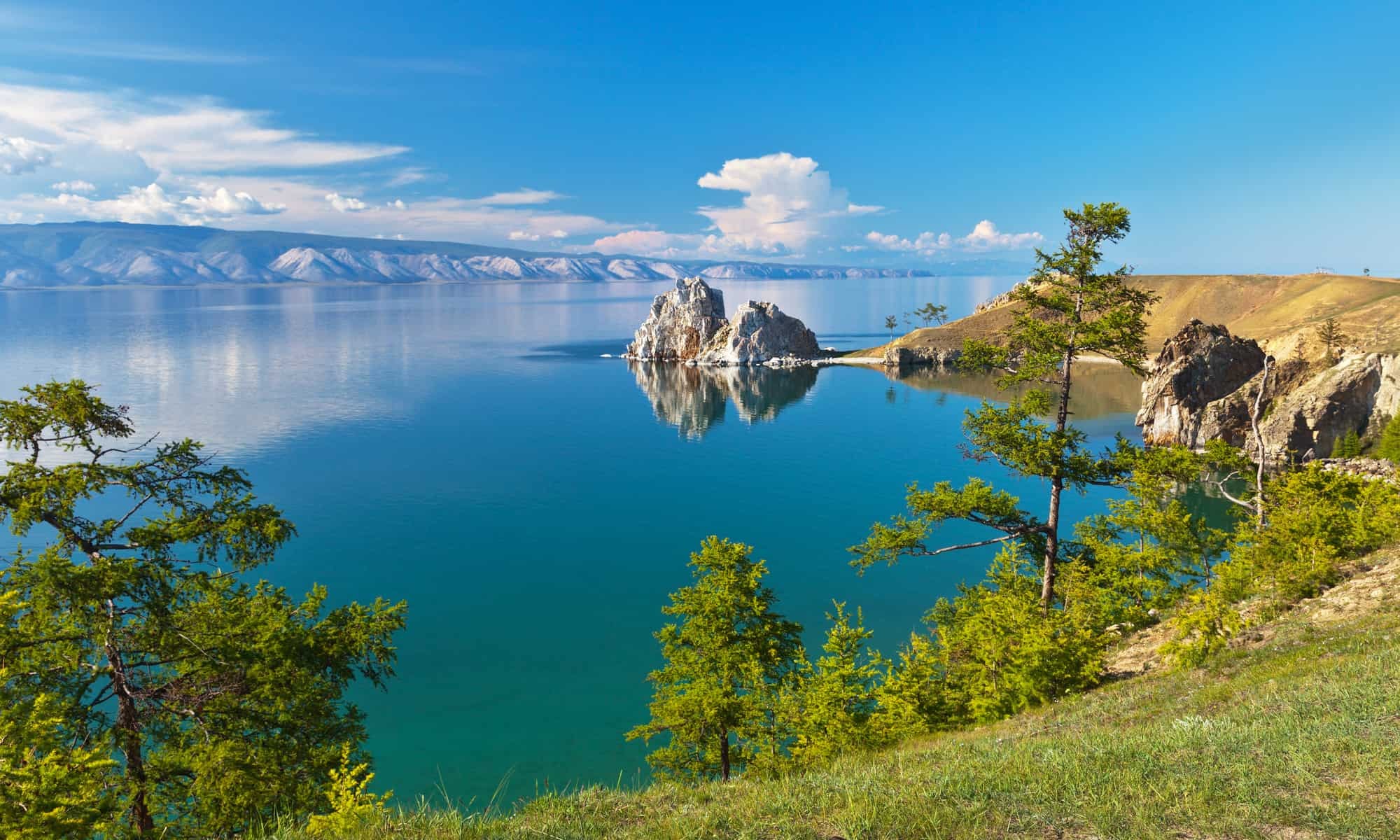
Lake Baikal, located in Siberia, Russia, holds the title of the world’s deepest and oldest freshwater lake. With a depth of 1,642 meters and an age of over 25 million years, it’s a geological wonder. Baikal is incredibly clear, and in winter, it freezes into mesmerizing sheets of transparent ice, creating stunning natural patterns. The lake hosts thousands of plant and animal species found nowhere else, including the famous Baikal seal. It's recognized as a UNESCO World Heritage Site for its unmatched ecological value. Travelers often visit for hiking, ice skating, and marveling at the breathtaking landscapes surrounding its shores. Lake Baikal is a must-visit for anyone passionate about nature and adventure.
05. Lake Titicaca, Peru/Bolivia:
Area: 8,372 km²
Famous for: Highest navigable lake in the world, floating reed islands.
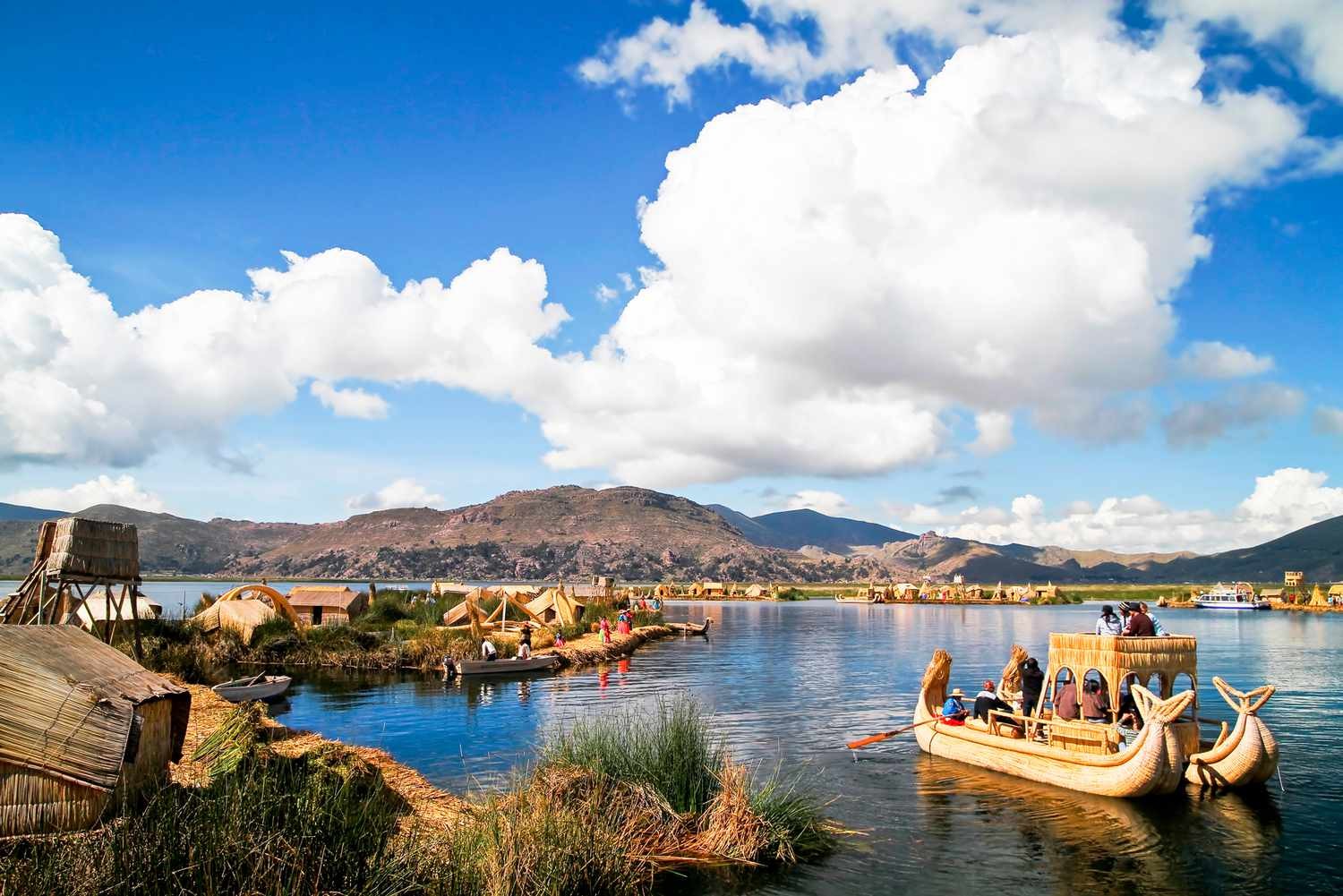
Straddling the border of Peru and Bolivia, Lake Titicaca is the world’s highest navigable lake, sitting at an altitude of 3,812 meters. The lake is deeply woven into the history of the Incan civilization and is home to the Uros people, who live on floating islands made entirely of reeds. Visitors can explore traditional villages, experience local customs, and marvel at the beauty of the blue waters surrounded by rolling hills. The mythical energy and sacred significance of Titicaca give it an almost spiritual aura. Whether you're sailing to Taquile Island or exploring ancient ruins, Lake Titicaca offers a rich cultural and natural experience unlike anywhere else.
06. Lake Bled, Slovenia:
Area: 145 ha
Famous for: Fairytale island church, medieval castle, emerald-green waters.
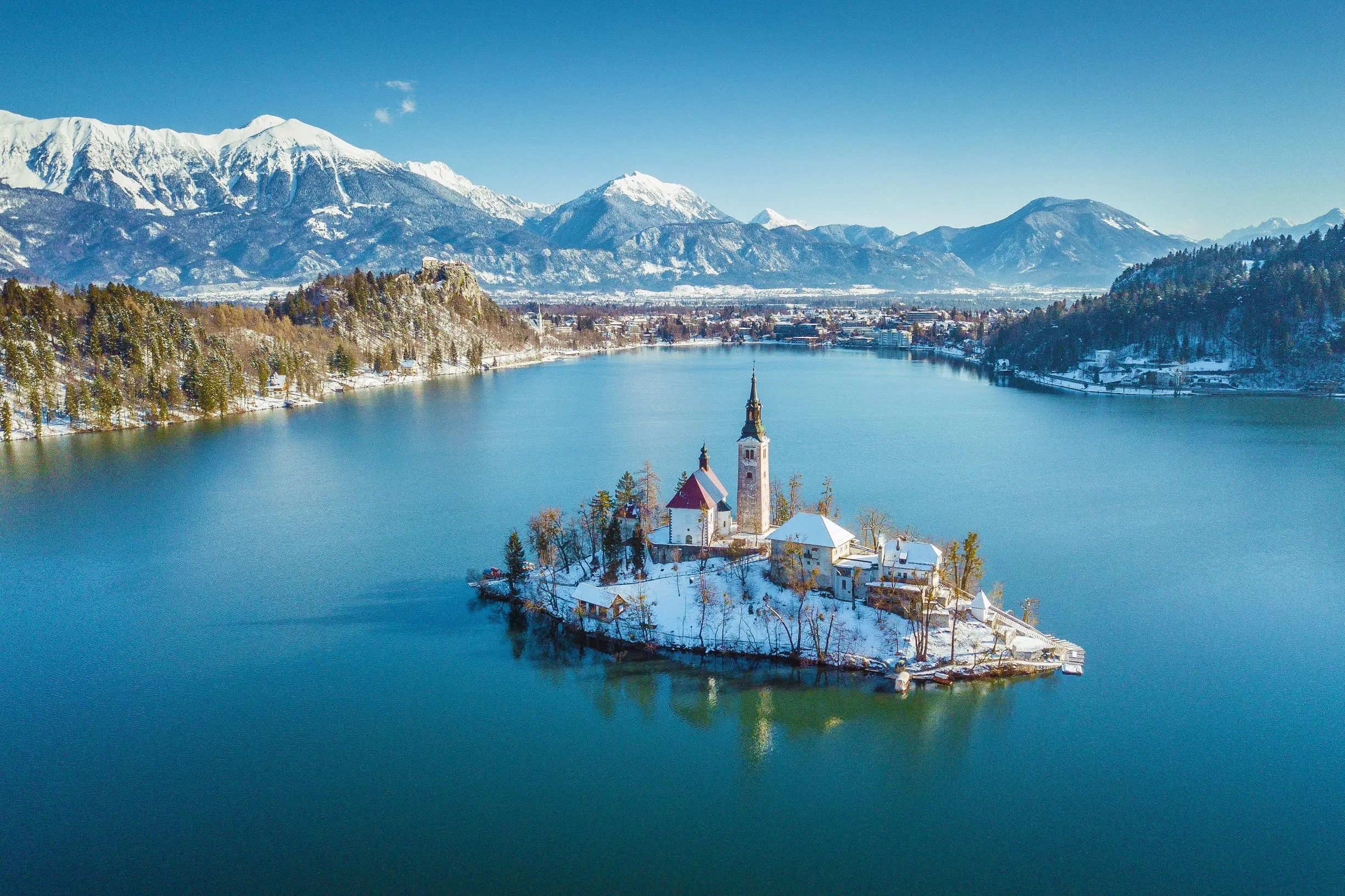
Lake Bled is Slovenia’s gem, famous for its stunning island church perched in the middle of emerald-green waters. Surrounded by lush forests and overlooked by a medieval castle atop a steep cliff, Lake Bled feels like a place straight out of a storybook. Visitors often take traditional wooden "pletna" boats to the island, where ringing the church bell is said to grant wishes. The lake is equally beautiful year-round, from summer blooms to winter snow. Hiking trails, lakeside cafés, and romantic rowing experiences make Lake Bled an unforgettable destination for travelers seeking natural beauty and old-world charm.
07. Moraine Lake, Canada:
Area: 50 ha
Famous for: Turquoise glacier-fed waters, Valley of the Ten Peaks.
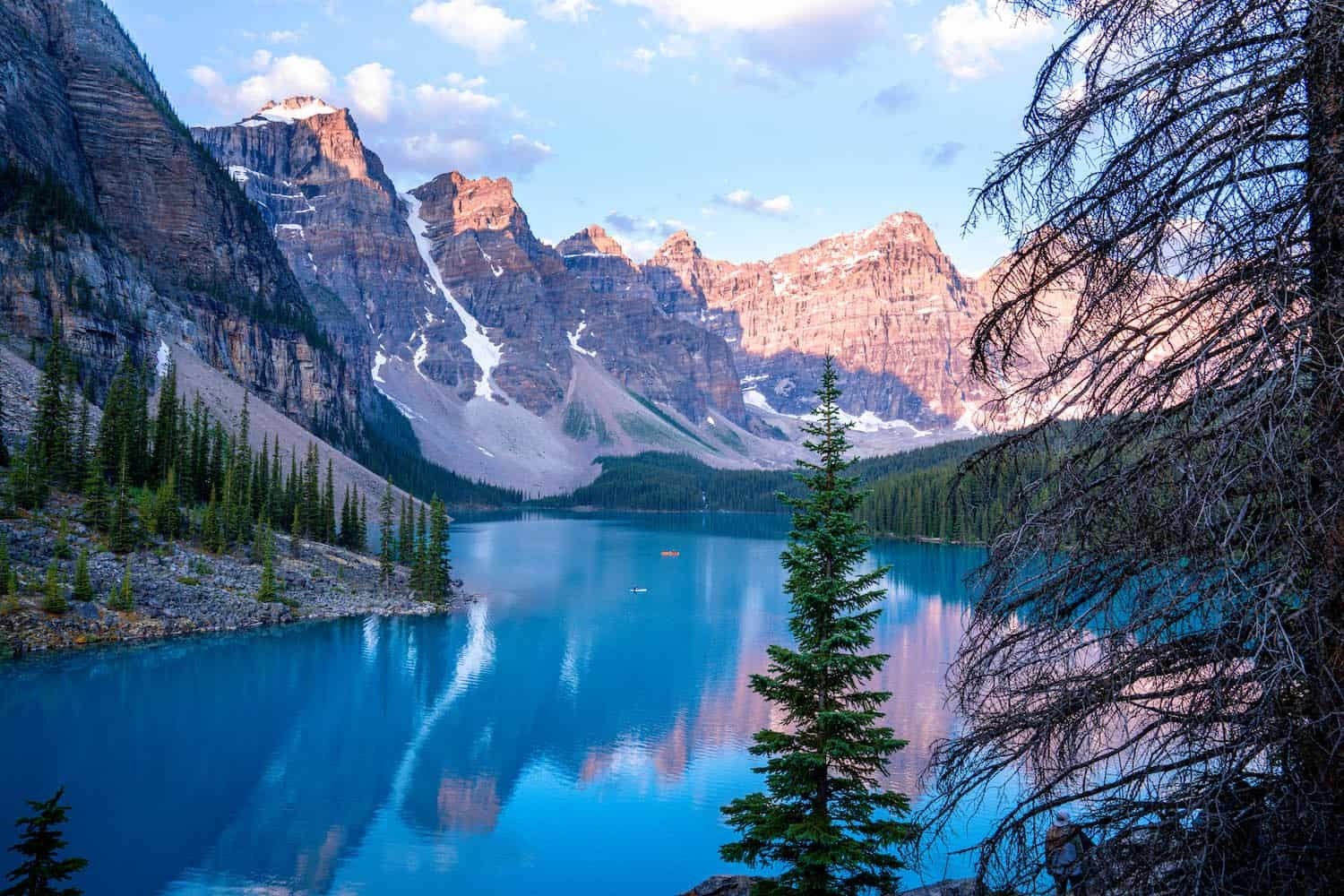
Located in Banff National Park, Alberta, Moraine Lake is one of Canada’s most photographed locations. Its vivid turquoise waters, caused by glacial rock flour, dazzle visitors, especially during late spring and summer. The lake is set in the dramatic Valley of the Ten Peaks, creating a breathtaking panorama. A short hike up the Rockpile Trail offers one of the most iconic views in all of Canada. Moraine Lake’s stunning scenery has even appeared on Canadian currency. Adventure seekers can enjoy canoeing on the lake or trekking nearby trails. The vibrant color and pristine wilderness make Moraine Lake an essential stop for nature lovers.
08. Lake Wakatipu, New Zealand:
Area: 291 km²
Famous for: Unique lightning-bolt shape, legends of a sleeping giant.
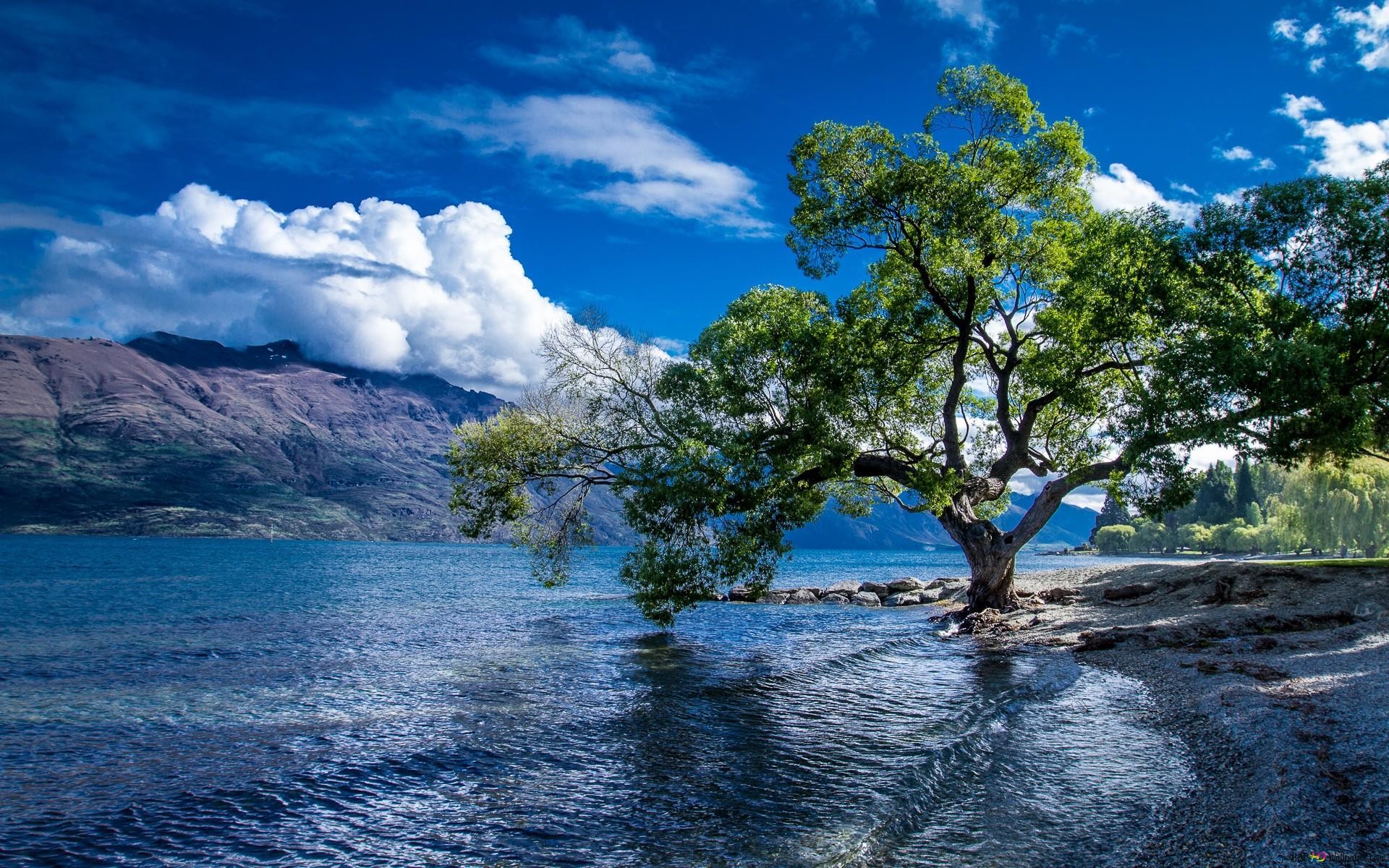
Lake Wakatipu, located in the Otago region of New Zealand’s South Island, captivates with its crystal-clear waters and majestic mountain backdrop. The lake’s distinctive lightning-bolt shape is linked to a local Māori legend about a sleeping giant whose heartbeat causes the water level to rise and fall every few minutes. Surrounding towns like Queenstown and Glenorchy offer endless adventure activities, from bungee jumping to scenic cruises. The Remarkables mountain range frames the lake beautifully, providing jaw-dropping views. Lake Wakatipu is not just a feast for the eyes — it's a gateway to adventure, culture, and breathtaking natural beauty.
09. Plitvice Lakes, Croatia:
(Part of Plitvice Lakes National Park)
Famous for: Cascading lakes and waterfalls, UNESCO World Heritage Site.
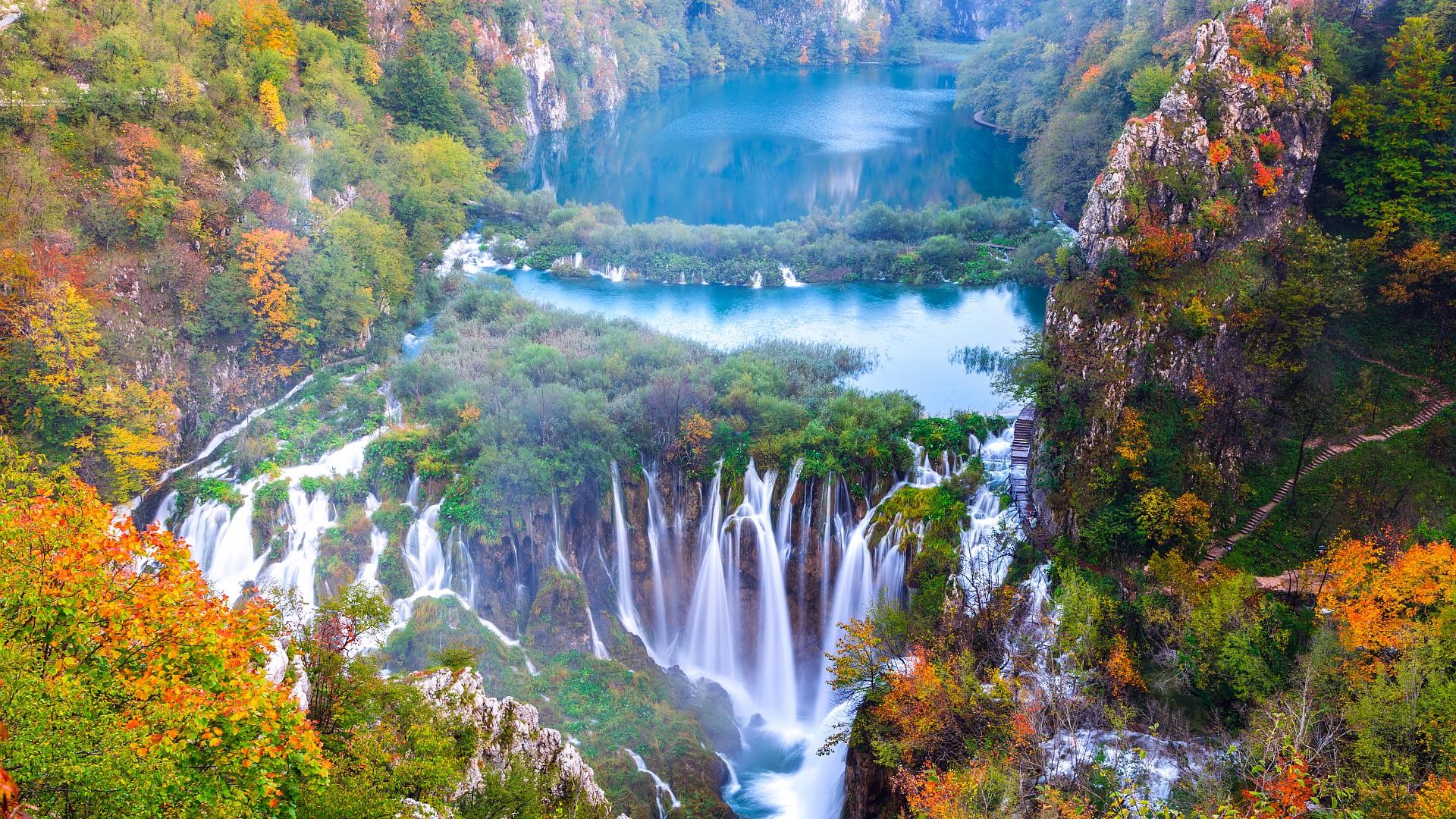
Plitvice Lakes National Park is a spectacular natural wonder in Croatia, famous for its cascading system of 16 interconnected lakes and countless waterfalls. Each lake has its own color, ranging from azure to green to grey, depending on mineral content and sunlight. Wooden boardwalks and hiking trails weave through the park, allowing visitors to get up close to the mesmerizing waters. In autumn, the forests burst into vibrant colors, while winter transforms the landscape into a frozen fairyland. Recognized as a UNESCO World Heritage Site, Plitvice is one of Europe’s most stunning and peaceful natural escapes, perfect for photographers and nature lovers alike.
10. Laguna Colorada, Bolivia:
Area: 60 km²
Famous for: Red-colored water, flamingo habitat, surreal landscapes.
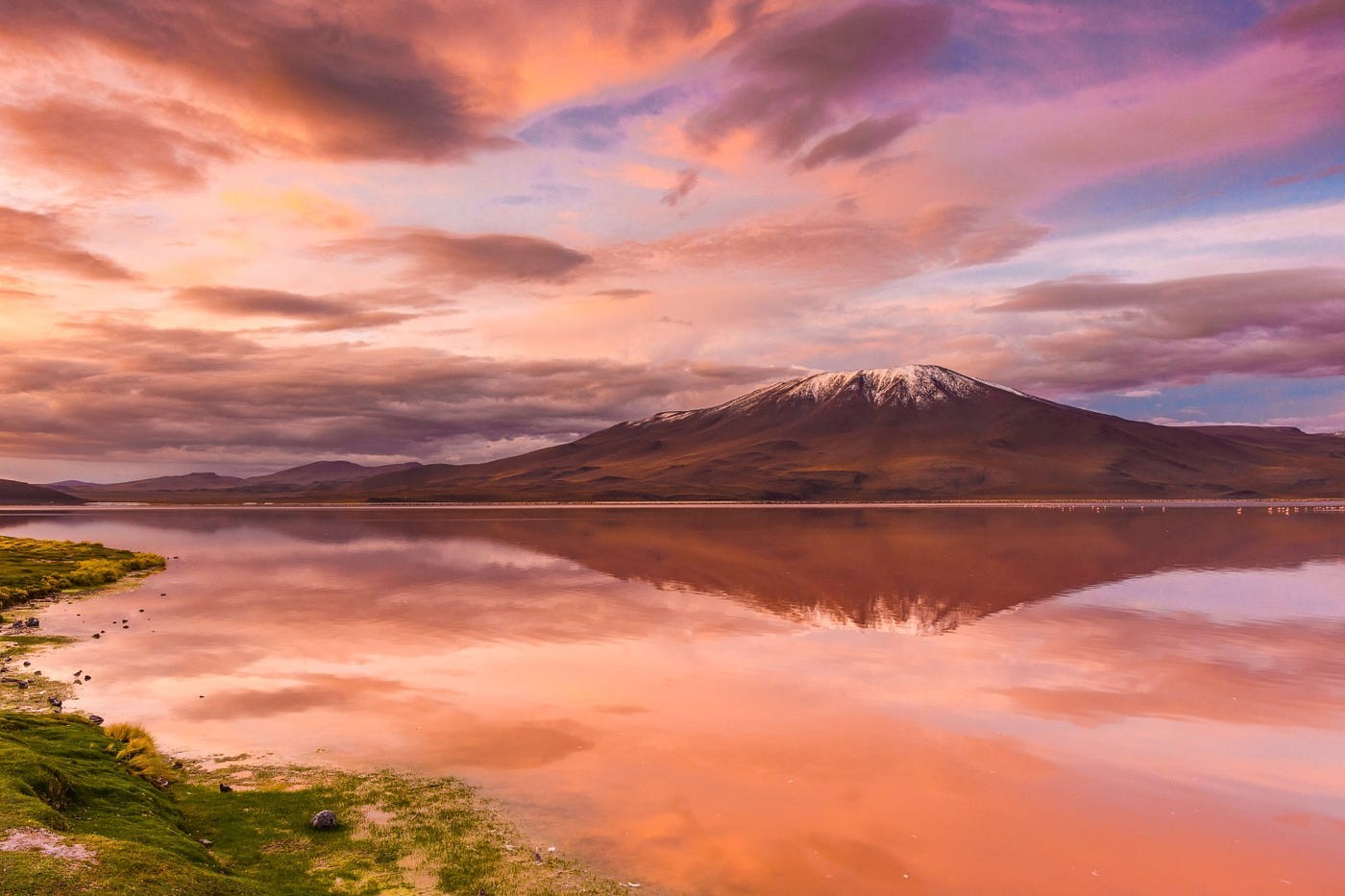
Laguna Colorada, located in Bolivia's Eduardo Avaroa Andean Fauna National Reserve, offers one of the most surreal landscapes on Earth. The lake’s striking red hue is due to red sediments and algae thriving in the salty water. Dotting the surface are large white borax islands and flocks of pink flamingos, creating an otherworldly sight. The contrast between the lake's vivid colors and the surrounding desert landscape is unforgettable. Visitors often include Laguna Colorada in a tour of Bolivia’s famous Salar de Uyuni salt flats. The high altitude and dramatic setting make it a paradise for photographers and nature enthusiasts seeking something extraordinary.
11. Lake Hillier, Australia:
Famous for: Vibrant pink color, located near the ocean, mysterious origin.
Lake Hillier, located on Middle Island off the coast of Western Australia, is one of the world's most extraordinary natural wonders. What makes it truly unique is its vivid bubblegum-pink color, which remains strikingly pink all year round. Scientists believe the color comes from microorganisms like Dunaliella salina and specific bacteria, though the exact cause remains somewhat mysterious. What’s even more fascinating is the stark contrast between the pink lake and the deep blue of the surrounding Southern Ocean. Although swimming isn't typically allowed to preserve its delicate ecosystem, visitors can admire its beauty from the air via scenic flights. Lake Hillier’s surreal colors make it a must-visit for lovers of unique natural phenomena.
12. Lake Pehoé, Chile:
Area: 22 km²
Famous for: Turquoise waters, Patagonian landscape, Torres del Paine backdrop.
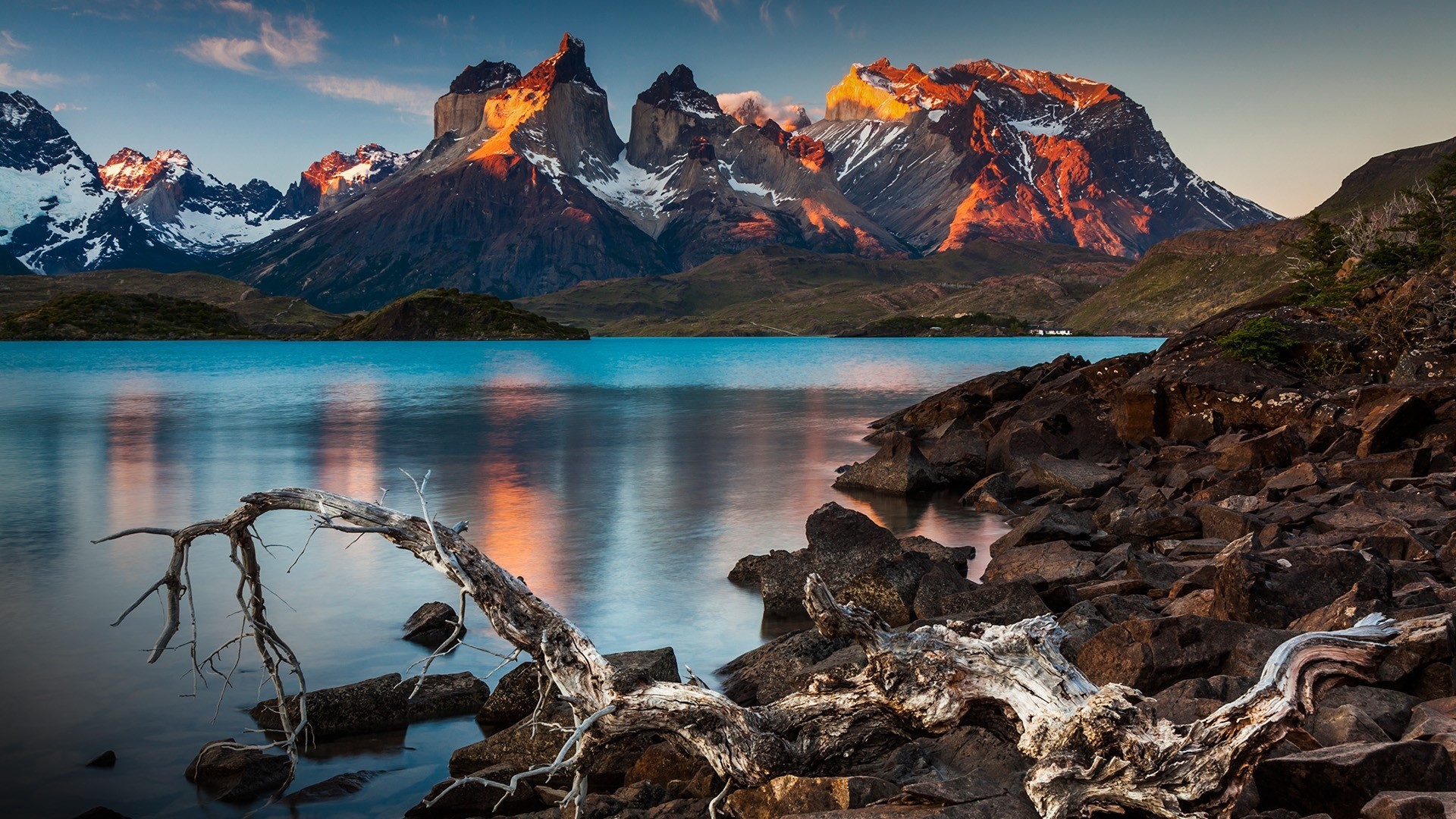
Lake Pehoé, located within Chile’s Torres del Paine National Park in Patagonia, is a jaw-dropping destination for adventurers and nature lovers alike. The lake dazzles with its vibrant turquoise waters, created by glacial meltwater full of fine sediment known as “rock flour.” Framed by dramatic peaks like the famous Cuernos del Paine, Lake Pehoé offers one of the most iconic vistas in all of South America. The area around the lake is ideal for hiking, wildlife watching, and photography. Expect to encounter guanacos, foxes, and even the elusive puma. Whether bathed in sunlight or moody under storm clouds, Lake Pehoé’s beauty is always breathtaking.
13. Dead Sea, Jordan:
Area: 605 km²
Famous for: Extreme salinity, floating effortlessly, mineral-rich mud.

The Dead Sea, despite its name, is actually a salt lake bordered by Jordan to the east and Israel and Palestine to the west. It's the lowest point on Earth’s surface, lying about 430 meters below sea level. The lake’s extreme salinity — about ten times saltier than the ocean — means no fish can live in it, hence the name. Visitors flock here to float effortlessly on its dense waters and to experience the therapeutic properties of its mineral-rich mud. The surrounding desert landscape adds to the surreal experience. The Dead Sea’s unique natural characteristics and historical significance make it one of the world’s most fascinating lakes.
14. Lake Atitlán, Guatemala:
Area: 130.1 km²
Famous for: Volcanic scenery, Mayan culture, colorful lakeside villages.
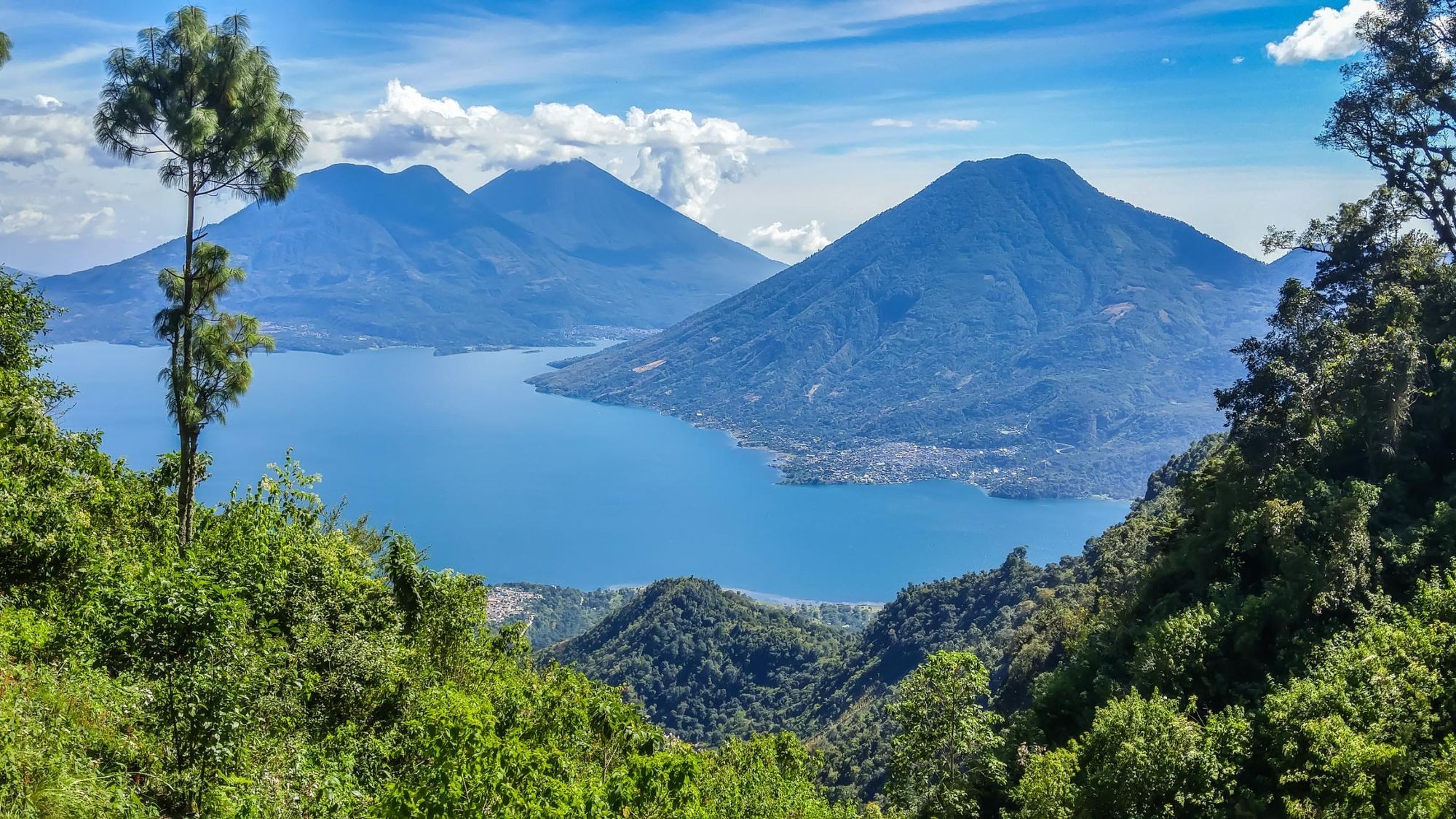
Lake Atitlán, located in the Guatemalan Highlands, is often hailed as the most beautiful lake in the world. Ringed by three majestic volcanoes — Atitlán, Tolimán, and San Pedro — the lake is surrounded by traditional Mayan villages, each with its own unique character. The lake's deep blue waters reflect the dramatic skyline, creating an almost mystical atmosphere. Activities around the lake include kayaking, hiking volcanoes, and exploring bustling local markets. The town of Panajachel serves as the main hub, while villages like San Juan La Laguna offer authentic cultural experiences. Lake Atitlán is not just visually stunning — it’s a vibrant, living landscape steeped in history and tradition.
15. Lake Kawaguchi, Japan:
Area: 6.13 km²
Famous for: Stunning views of Mount Fuji, seasonal cherry blossoms.
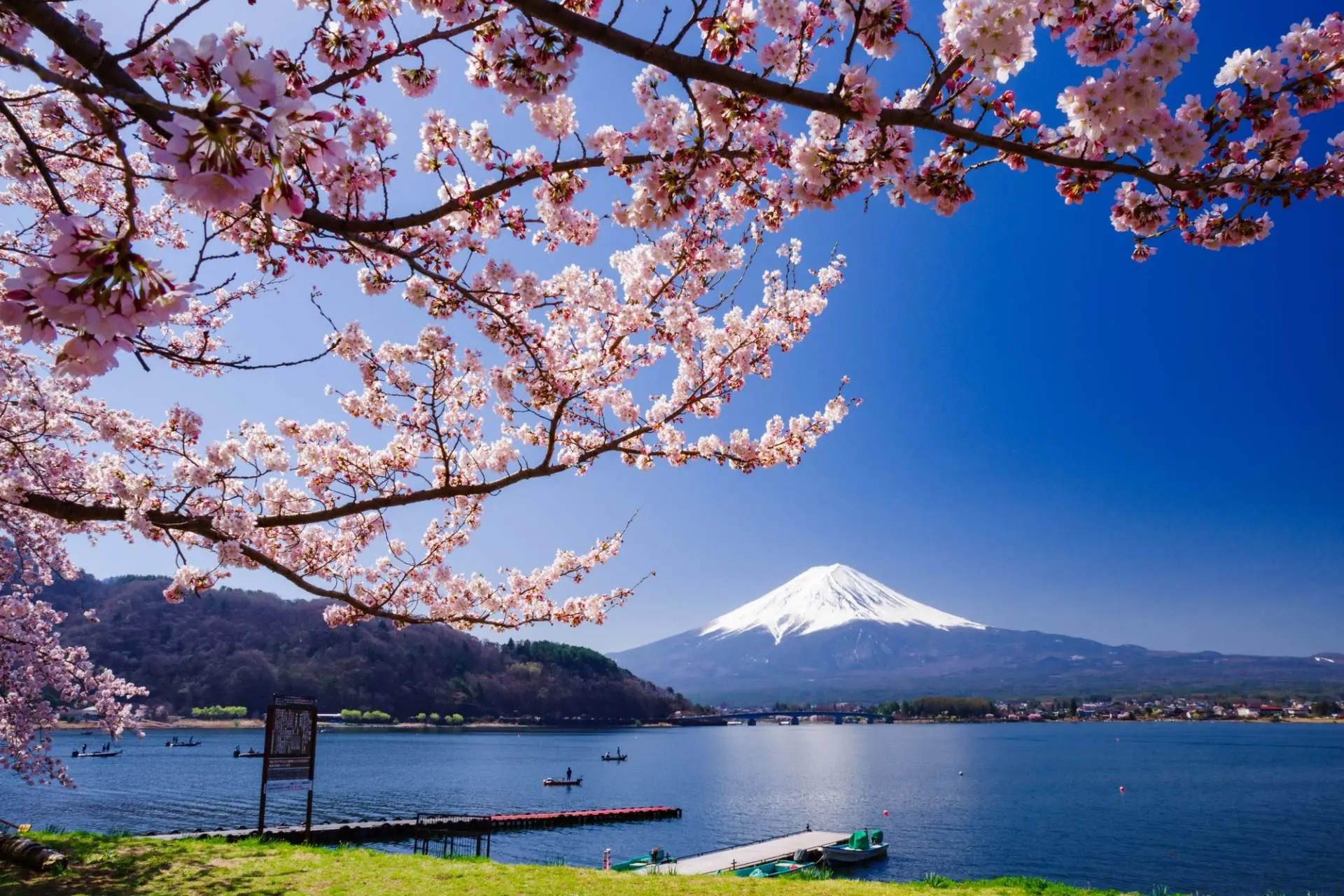
Lake Kawaguchi, part of Japan’s famous Fuji Five Lakes, offers some of the most iconic views of Mount Fuji. Easily accessible from Tokyo, the lake is a popular destination year-round, but it is especially breathtaking during cherry blossom season in spring and during the fiery colors of autumn. Visitors can take sightseeing cruises, rent paddle boats, or explore the nearby hot springs (onsen). The area around Lake Kawaguchi also boasts museums, gardens, and cozy ryokan inns. On clear days, the reflection of Mount Fuji in the lake’s still waters creates a perfect postcard scene. It’s a peaceful, picturesque escape from the urban hustle.
16. Lake Pichola, India:
Area: 6.96 km²
Famous for: Romantic lake palaces, historic Udaipur city.

Lake Pichola, located in the heart of Udaipur, Rajasthan, is one of India’s most enchanting lakes. Constructed in the 14th century, the lake is home to several islands, including Jag Mandir and the famous Taj Lake Palace, which appears to float like a mirage on the water. Boating on the lake during sunset is a magical experience, as the golden light bathes the surrounding palaces, temples, and hills. Udaipur, often called the "City of Lakes," is a beautiful blend of history, architecture, and romance, and Lake Pichola is its glittering centerpiece. The lake's regal aura has made it a favorite backdrop for films and royal weddings.
17. Hangzhou West Lake, China:
Famous for: Classical beauty, cultural significance, UNESCO World Heritage Site.
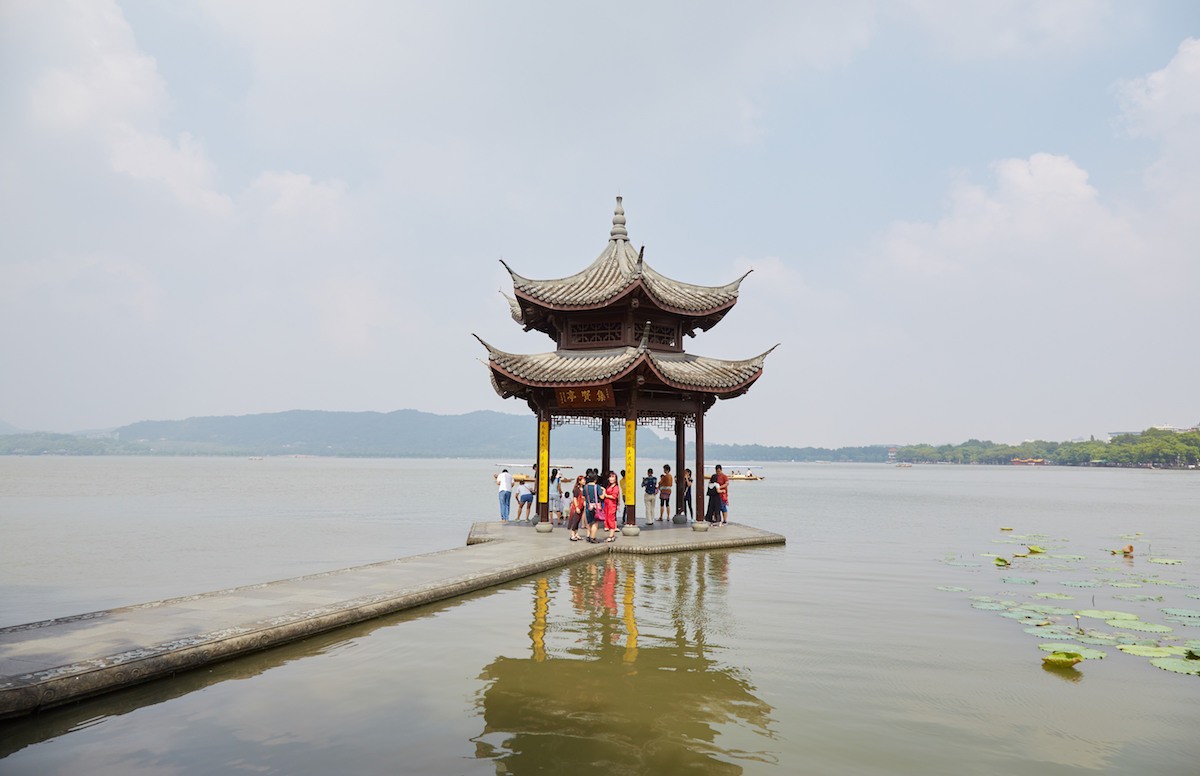
West Lake, located in Hangzhou, China, is a UNESCO World Heritage Site celebrated for its classical beauty and deep cultural importance. Its scenic landscapes have inspired countless poets, painters, and emperors throughout Chinese history. Divided by picturesque causeways and dotted with pagodas, gardens, and temples, West Lake is a masterpiece of harmonious design between man and nature. Visitors can enjoy boat rides, tea plantations, and strolls along willow-lined paths. The lake’s dreamy scenery changes with the seasons, making it beautiful year-round. At sunset, the lake’s reflections and the soft sounds of traditional music create a tranquil, timeless atmosphere.
18. Lake Louise, Canada:
Area: 80 ha
Famous for: Turquoise waters, Victoria Glacier backdrop, luxury mountain resort.
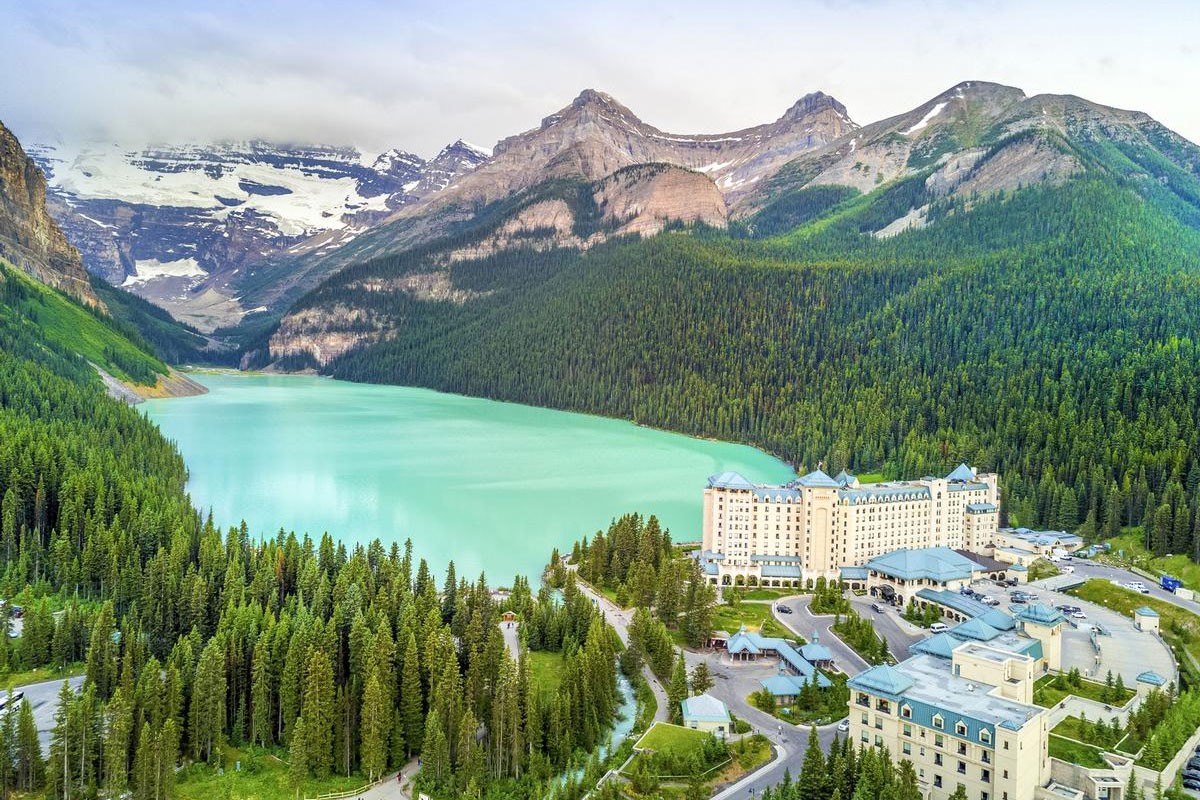
Lake Louise, nestled within Banff National Park in Alberta, is one of Canada's most iconic natural landmarks. Famed for its stunning turquoise waters, which come from rock flour carried by melting glaciers, the lake sits beneath the majestic Victoria Glacier. In summer, visitors can canoe across the vibrant waters, while in winter, the lake freezes over to become a magical ice skating rink. The luxurious Fairmont Chateau Lake Louise sits right on its shore, offering world-class accommodations. Whether hiking the surrounding trails, enjoying a serene tea house visit, or simply taking in the view, Lake Louise is a feast for the senses in every season.
19. Lake Lucerne, Switzerland:
Area: 113.6 km²
Famous for: Scenic fjord-like views, historic Swiss sites, paddle steamers.
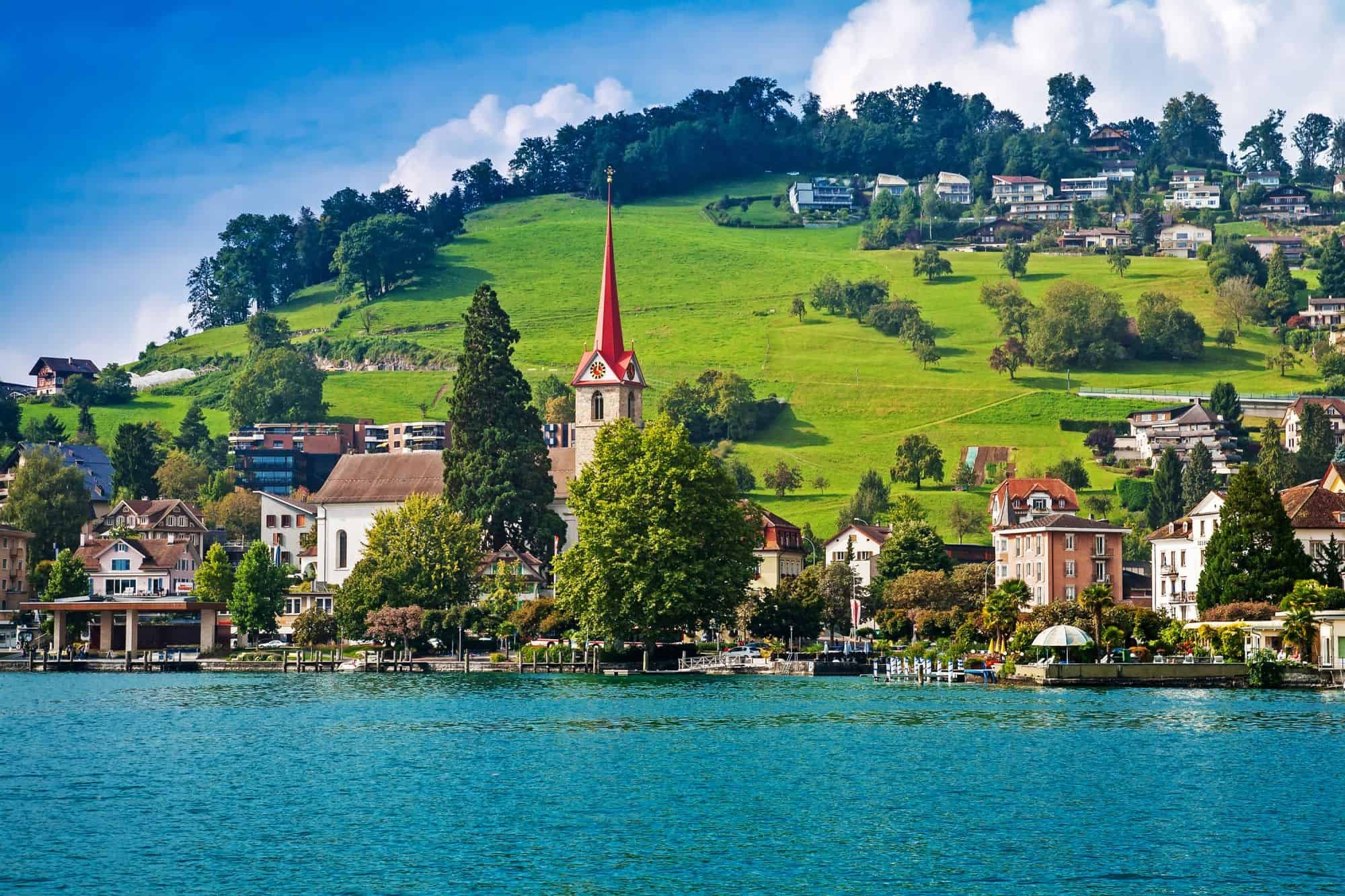
Lake Lucerne is one of Switzerland’s most stunning and iconic lakes, offering a dramatic mix of mountains and water. Its irregular shape and deep blue waters make it look like a series of fjords connected together. Surrounded by towering peaks such as Mount Pilatus and Mount Rigi, Lake Lucerne offers unforgettable views at every turn. Historic cities like Lucerne sit at its shores, blending medieval charm with modern luxury. You can explore the lake on traditional paddle steamers or take panoramic train rides like the Gotthard Panorama Express. With its combination of natural beauty and cultural heritage, Lake Lucerne feels like a living postcard of Switzerland.
20. Lake Malawi, Malawi/Mozambique/Tanzania:
Area: 29,600 km²
Famous for: Rich biodiversity, colorful cichlid fish, freshwater diving.
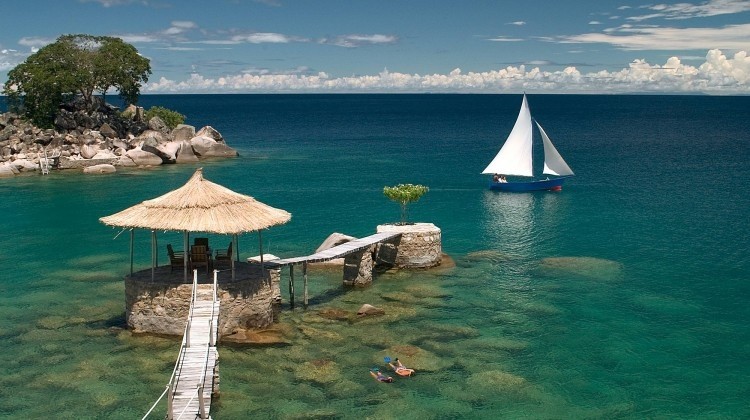
Lake Malawi, also known as Lake Nyasa, is Africa’s third-largest and second-deepest lake, stretching across Malawi, Mozambique, and Tanzania. It’s most famous for its crystal-clear waters and incredible biodiversity — it’s home to more species of fish than any other lake on Earth, particularly colorful cichlids. The lake offers beautiful beaches, snorkeling, kayaking, and scuba diving opportunities that rival the best marine destinations. Towns like Nkhata Bay and Cape Maclear serve as relaxed bases for exploring. Its warm, tropical atmosphere combined with its incredible underwater life makes Lake Malawi a true paradise for both adventure seekers and nature lovers.
21. Attabad Lake, Pakistan:
Famous for: Turquoise waters, dramatic mountainous backdrop, created by landslide.
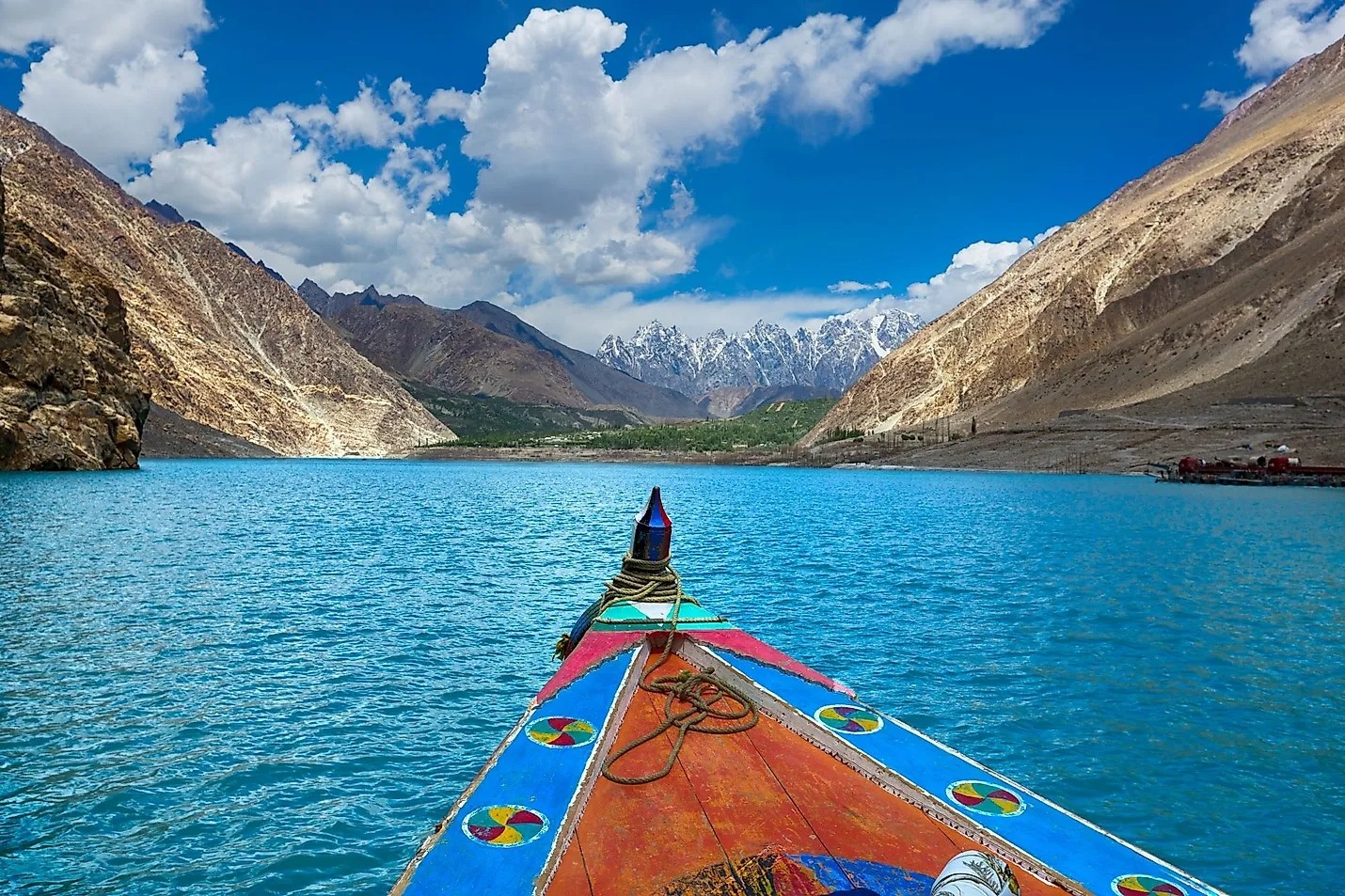
Attabad Lake, located in the Hunza Valley of Pakistan, is a striking turquoise lake formed in 2010 after a massive landslide blocked the Hunza River. Despite its tragic origins, the lake has become one of the country's most beautiful and visited natural attractions. Its vivid blue waters are surrounded by steep, rugged mountains, creating a breathtaking landscape. Visitors can enjoy boating, jet skiing, and fishing on the lake, or stay in luxury resorts that have sprung up nearby. Attabad Lake symbolizes resilience and renewal, turning a disaster into a serene oasis of adventure and beauty in the heart of the Karakoram mountains.
22. Peyto Lake, Canada:
Area: 140 ha
Famous for: Wolf-head shape, bright turquoise color, glacier-fed waters.
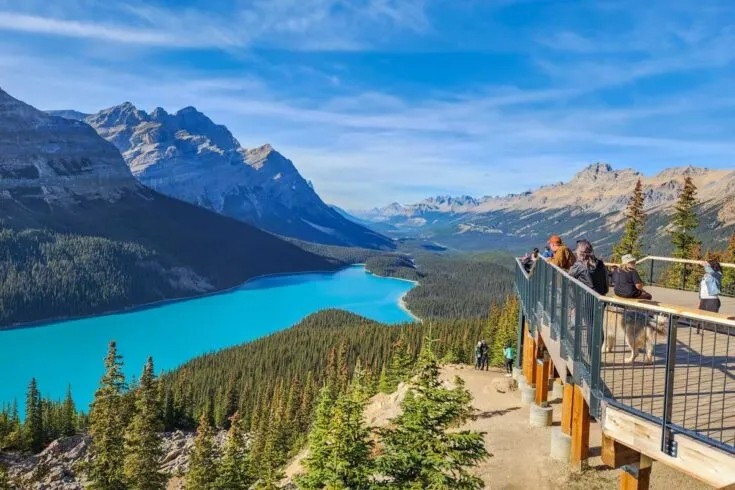
Peyto Lake, located in Banff National Park in Alberta, Canada, is famous for its incredibly bright turquoise waters and its unique shape that resembles a wolf’s head when viewed from above. The lake’s vibrant color comes from glacial rock flour that enters the water during the summer months. A short hike from the Icefields Parkway leads to a popular viewpoint, offering breathtaking panoramic views. Peyto Lake is less crowded than its famous neighbor, Lake Louise, making it a perfect stop for those looking for peaceful natural beauty. The lake's magical colors and pristine wilderness make it an essential highlight of the Canadian Rockies.
23. Lake Powell, USA:
Area: 658 km²
Famous for: Red-rock canyons, houseboating, Glen Canyon National Recreation Area.
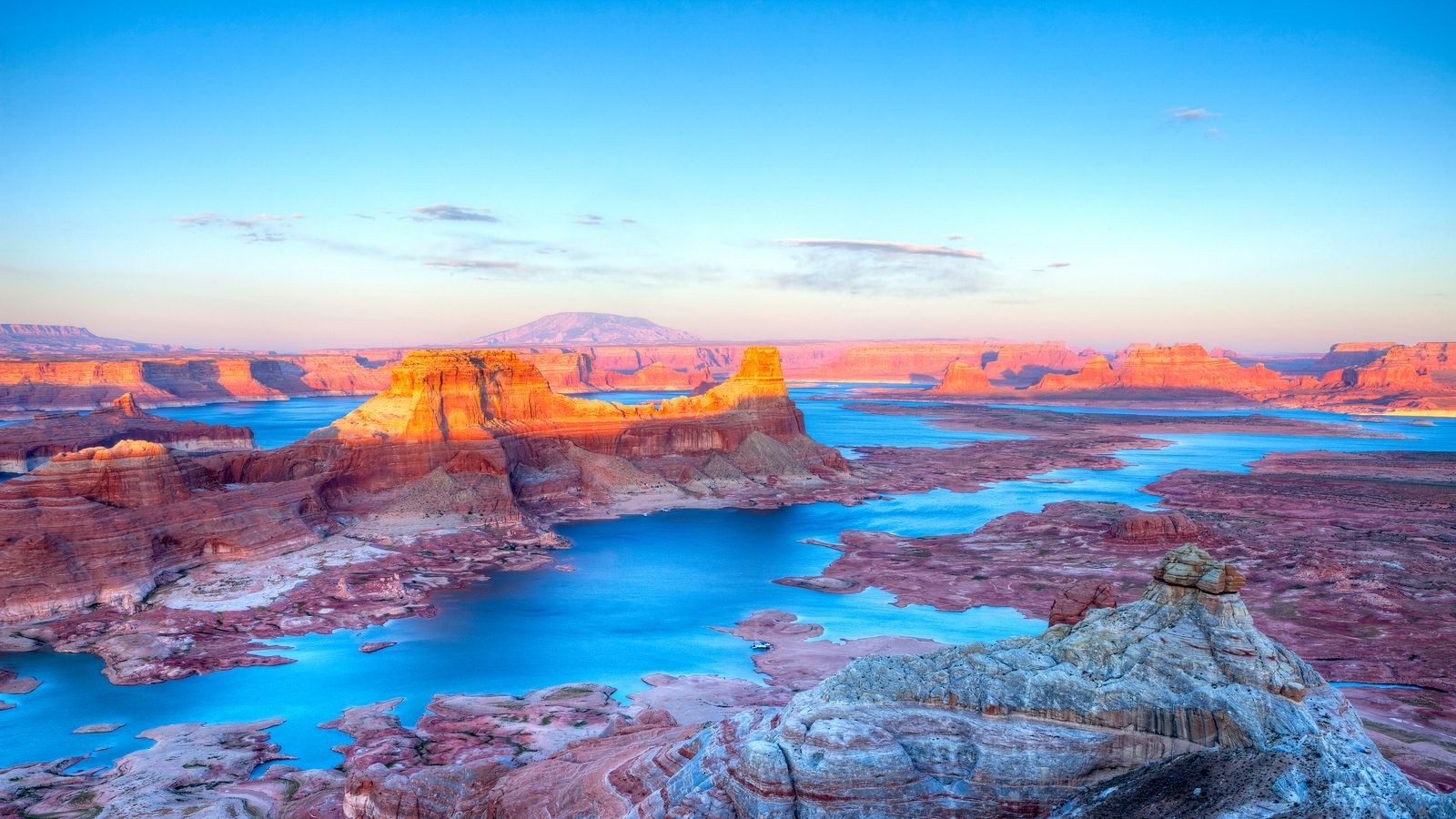
Lake Powell is an extraordinary man-made reservoir on the Colorado River, straddling the border between Utah and Arizona. Surrounded by dramatic red-rock landscapes and towering sandstone formations, Lake Powell is a paradise for outdoor enthusiasts. Popular activities include houseboating, kayaking through narrow canyons, fishing, and camping under the stars. Rainbow Bridge National Monument, one of the world’s largest natural bridges, can be visited by boat. Although human-created, Lake Powell has a wild beauty that rivals nature’s finest. It’s the ultimate playground for adventure lovers seeking unique desert and water experiences all in one breathtaking location.
24. Kerid Volcanic Crater Lake, Iceland:
Famous for: Bright blue water, red volcanic rock, dramatic crater setting.
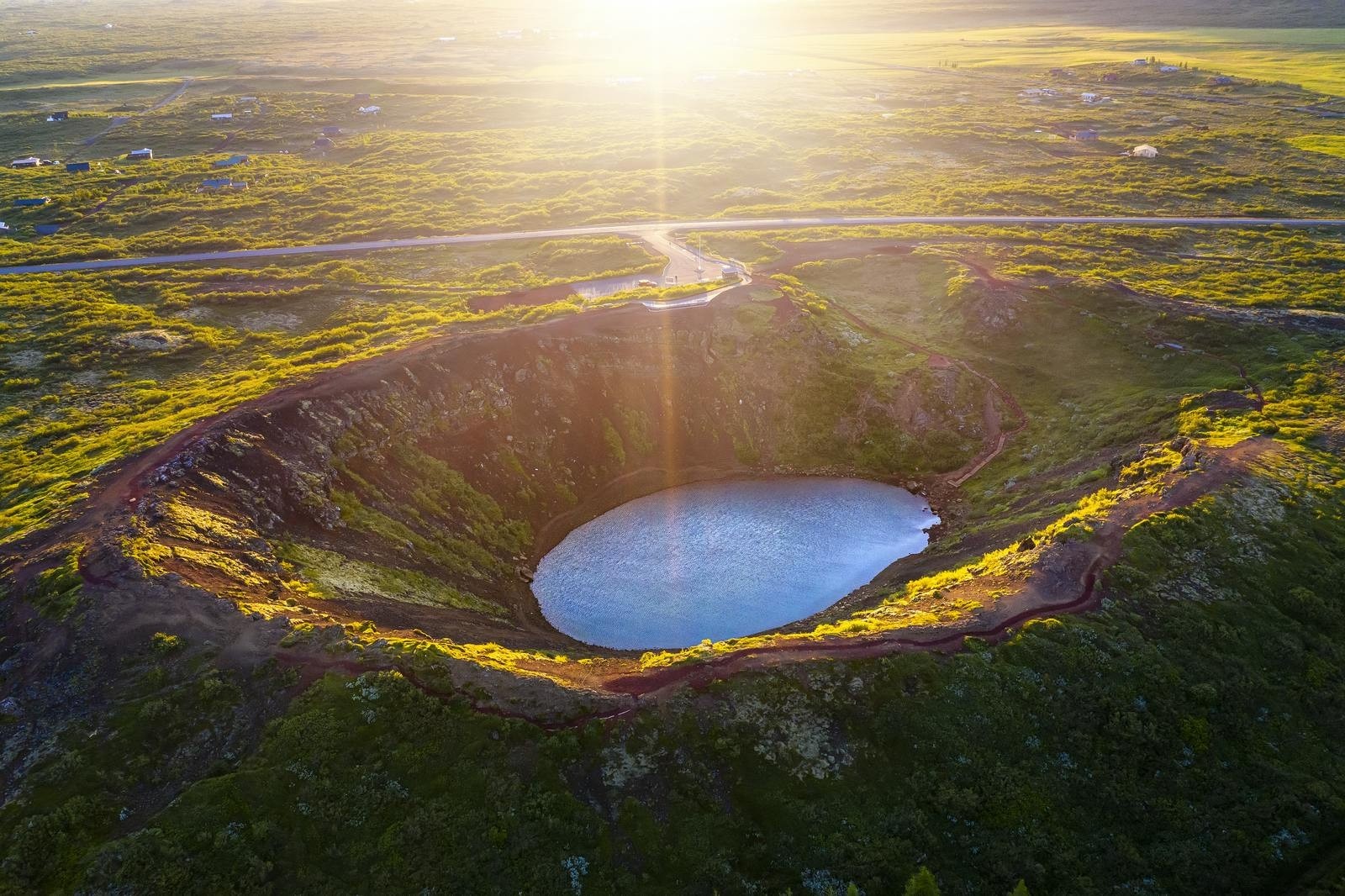
Kerid, a volcanic crater lake in southern Iceland, is one of the most colorful natural sites in the country. Unlike most crater lakes, Kerid's steep slopes are rich in red volcanic rock rather than the usual black basalt, creating a stunning contrast with the bright blue water. The crater is about 3,000 years old, much younger compared to Iceland’s other volcanic features, making its formation details clearer and more dramatic. Visitors can walk around the rim for panoramic views or hike down to the lake itself. Kerid’s vivid colors and otherworldly scenery make it a must-visit stop along Iceland’s famous Golden Circle route.
25. Lake Tekapo, New Zealand:
Famous for: Turquoise waters, lupin flowers, stargazing under the Dark Sky Reserve.
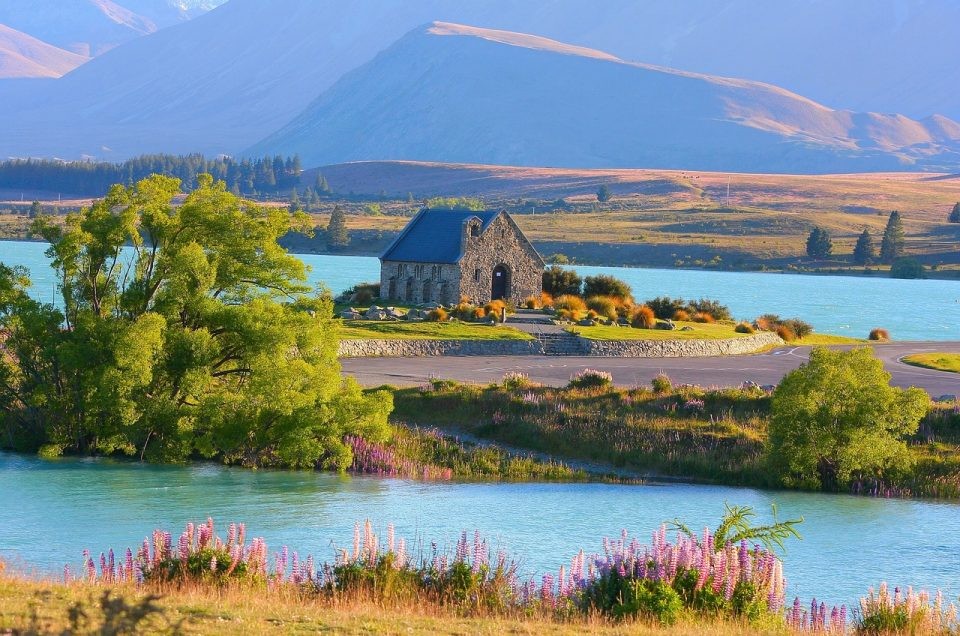
Lake Tekapo, located in the heart of New Zealand’s South Island, is a breathtaking destination known for its unreal turquoise waters and dramatic mountainous backdrop. The lake's vibrant color is due to finely ground rock particles from glaciers that feed it. In spring and early summer, the shores of Lake Tekapo are transformed by blooming fields of colorful lupin flowers, creating a picture-perfect scene. It’s also one of the best places in the world for stargazing, as it's part of the UNESCO Dark Sky Reserve. Visitors often visit the iconic Church of the Good Shepherd, which frames the stunning lake and mountains beyond. Lake Tekapo is truly a magical blend of water, sky, and landscape.
Traveling the world through its lakes is like stepping into nature’s most perfect masterpieces. Each lake featured here — from the luxurious shores of Lake Como to the surreal pink waters of Lake Hillier and the cultural beauty of Lake Atitlán — offers its own unique story, colors, and adventures. Whether shaped by glaciers, volcanoes, or time itself, these lakes remind us of Earth’s incredible diversity and timeless allure.
Exploring these stunning lakes not only connects us to nature’s grandeur but also to the cultures and histories that have flourished along their shores. Wherever your travels may take you, a journey to any of these breathtaking lakes promises experiences filled with wonder, peace, and unforgettable memories.
So, where will your next lakeside adventure begin?


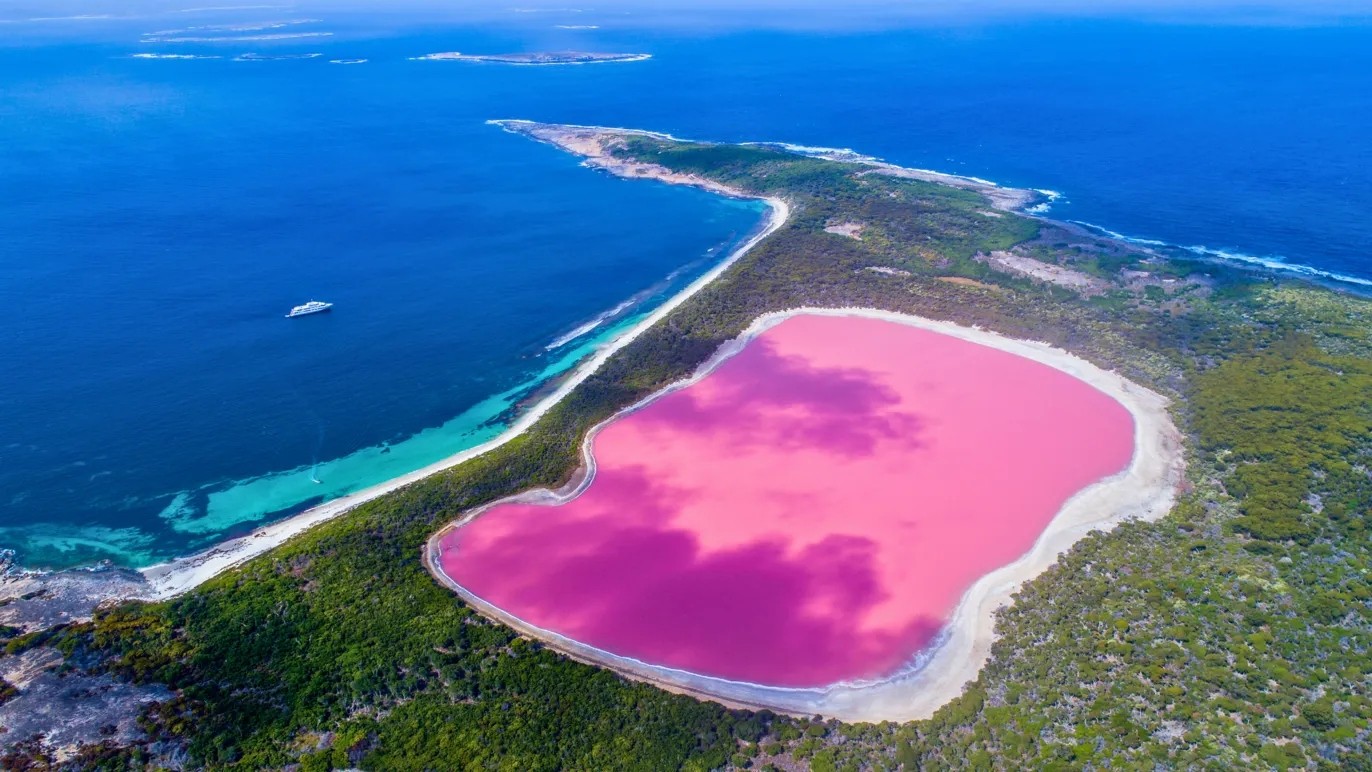

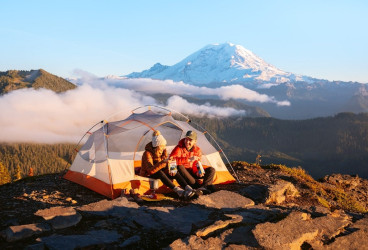
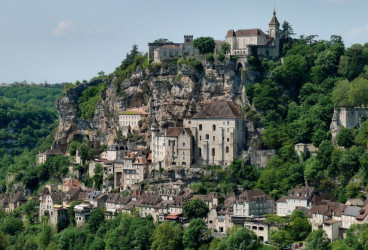







{{item.get_author.first_name}} {{item.get_author.last_name}}
Level 7
5 Photos
36 Reviews
{{item.comment_txt}}
{{item_reply.get_author.first_name}} {{item_reply.get_author.last_name}}
@ {{item_reply.reply_to}}, {{item_reply.reply_txt}}